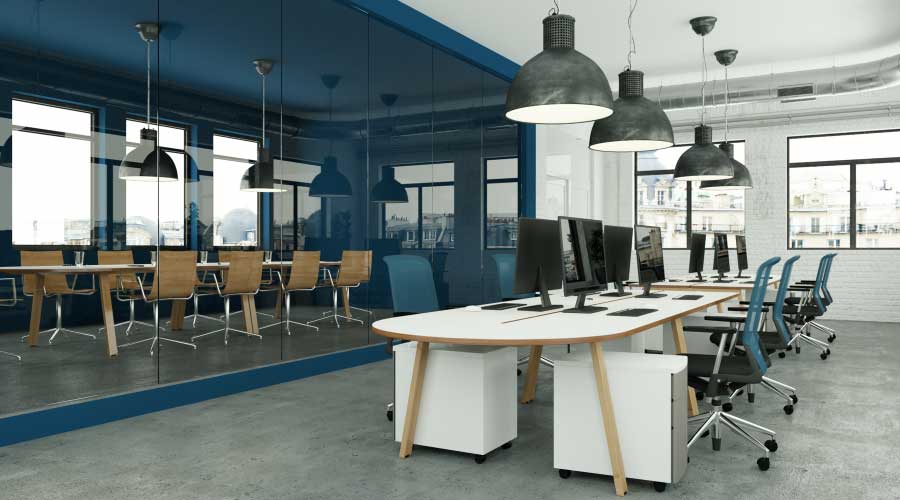Daylighting and Controls Can Be Part Of Lighting Upgrades
8. �What are the daylighting
opportunities in existing buildings?
The most effective daylighting comes from the highest portion of a window. Many existing buildings were initially designed with high windows and high ceilings, when daylighting was considered the primary source of lighting. But often renovations have resulted in hung ceilings that extend to the window wall, obstructing the window's most desirable portion.
A lighting redesign could include re-thinking the ceiling at the perimeter. Is it possible to relocate HVAC ducts or raise the ceiling to its highest possible level for the first 10 to 15 feet from the window wall? This not only improves lighting quality, but will also increase the rentability of spaces. In addition, if the area at the top is optimized, daylight penetrates deeper into the interior, making daylight harvesting controls more viable.
Energy is only saved if electric lighting is reduced, and that requires controls that are user-friendly and properly commissioned. Daylight quality and glare controls can be enhanced by films, interior light shelves, window treatment, and automated blinds.
9. �How can lighting controls provide greater savings?
Studies have shown improvements in employee satisfaction when they have control of their local lighting. Wireless light controls are currently most appropriate for all-fluorescent installations. Beware of the lure of combination sensors — the ideal location of an occupancy sensor rarely overlaps with that of a daylight sensor. Digital addressable lighting interface (DALI) controls not only reduce energy consumption and wiring costs, and enable future flexibility in zoning, but have the added benefit of providing the facility manager with feedback about consumption and equipment failures. But these capabilities are only worth the investment if they will, in fact, be fully used. Finally, lighting controls will only save energy if they are properly designed and calibrated so that they do not distract or annoy the occupants.
10. �Are new technologies in their proper place?
There is a strong desire for the magic bullet, pill or technology to solve a problem. Don't fall into the trap of focusing on a product or technical solution before taking the necessary steps to assess the real design need. Independent advice is valuable on this topic. All of the pitfalls and myths about LED lighting would fill an article much longer than this, but the same caution applies to all products. Let the design lead to the technology, not the reverse. Many of the most successful energy savings techniques, and the first ones to consider, are "passive" measures, like room reflectances, proper placement of luminaires, selection of the appropriate light distribution, lighting the room surfaces, layout of furniture and circulation, daylighting, and tailoring the lighting approach for the space type. Excitement over a manufactured product is understandable, but it should never be the starting point for a redesign or retrofit.
In summary, before automatically moving ahead with a retrofit lighting project, take the time and care to evaluate the options and the long-term benefits. More time spent on the design side is likely to result in a luminous environment that is both energy efficient and truly effective for its intended purpose.
Hayden McKay, AIA, FIALD, FIES (HMcKay@HLBLIGHTING.COM) is a principal of Horton Lees Brogden Lighting Design (HLB), an architectural lighting design firm with offices on both coasts. A frequent designer of lighting for existing buildings, she has participated on the development of IESNA and DOE documents and other guidelines related to energy conservation and quality lighting design.
Related Topics:














